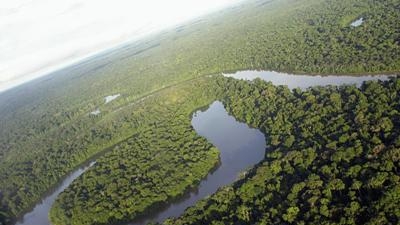Significant progress
Latin America has made good progress in many important respects. In energy, the region’s expansion plans contemplate hydroelectricity and natural gas as key sources, providing up to 50 percent and 30 percent of capacity in the next 20 years. Additionally, the region could cut its electricity consumption by 10 percent over the next decade by adopting widely available energy-efficient technologies. Such a reduction could save countries $36 billion in investments that would otherwise have to be made to expand its power generation capacity.
Another important milestone is achieving near-universal water and sanitation provision. Currently, more than 85% of the region’s urban population is connected to a water system, while collection of solid waste hovers around 93%.
And while increased agriculture, extractive activities and urbanization have expanded deforestation, many countries have, in turn, established protected areas – covering over 10 percent of the region’s territory, roughly double the area of two decades earlier.
These are just a few examples of the many ways in which the region has been living up to the environment. Now, the challenge is to turn those random innovations into holistic acts of policy and investments.
“Converting these sparks of innovation into mainstream policies and widespread practices is the challenge that lies ahead for Latin America & Caribbean. Green policies that support economic growth leverage clean technologies, efficient processes, and climate-resilient investments,” the report notes.
An important caveat: for these policies and investments to endure the passage of time they must benefit all of the region’s people. New roads, technologies, or natural resources need to create opportunities for all, the report says.
Some good examples of this already exist and are increasingly cited as models in policy discussions, says report author Jordan Schwartz.
Chile’s copper reserve, for instance, is an excellent story of social inclusiveness and how to transform mineral wealth into human wealth. Chile uses resources from its booming copper exports to generate human capital by financing education, says Schwartz while noting that this is the type of government action with built-in sustainability and a “green” aura around it.
Because of examples like this one and an increasing understanding of the adverse effects of keeping the status quo, Schwartz is hopeful that Latin America will fully embrace green growth in the coming years.
He thinks this growing awareness, especially by young people, is a driving force behind attempts to mainstream green investments 20 years after the first Rio conference –which laid the foundation of today’s green movement.
“They have seen what happens to quality of life as a result of air pollution, climate change or untreated waste, and because of this they are more willing to engage in a dialogue about it, to question things,” Schwartz said.
So now it just is a matter of time, concerted efforts and political will, for the region to make others green with envy over its achievements.
Greening the cities
A Compact and Efficient Urban Footprint: Densification subsidies to attract people to the city center and revitalize stagnant urban economies are now being utilized in many cities such as Mexico City, Lima, and Rio de Janeiro.
- Expansion of basic urban services: between 2001 and 2008, an additional 63 million people in LAC were covered by solid waste services, increasing the coverage rate for collection from 81 to 93 percent.
- Public transport and the alternatives to automobiles: as the region undergoes rapid growth in automobile ownership—4.5 percent per year—it has also led the developing world in the conceptualization and implementation of alternative mass transit systems, in key cities such as Curitiba, Bogota, Lima, Mexico City, Santiago and secondary cities of Colombia and Mexico.
- Expansion of low carbon electricity generation: electricity generation more than doubled between 1990 and 2009, growing at over 4 percent per year. The share of natural gas in the region increased from 10 percent in 1990 to 21 percent in 2009. With oil and diesel declining in importance, generation growth in LAC has thus had a lower carbon footprint than in other regions.
Greening rural areas
- The greening of transport networks and rural access: The region has innovated in several areas that may yet curb the unbridled growth of road traffic, pollution and induced impacts on land use and vulnerable communities—both through the multi-modal movement of freight and greener road transport systems.
- Effective management of water resources: A more participatory water governance agenda has been embraced by many countries and helped them improve their institutional and legal frameworks for water management—notably by developing river-basin management approaches with significant stakeholder participation.
- Extending successes with sustainable agriculture: The most important pillar of a strategy to reduce the environmental footprint of the region’s agriculture has been the preservation of existing forest cover and the encouragement of reforestation with native species where feasible. Latin America has led the way in using direct payments for forest conservation, with national programs in place in several countries and Brazilian states.


